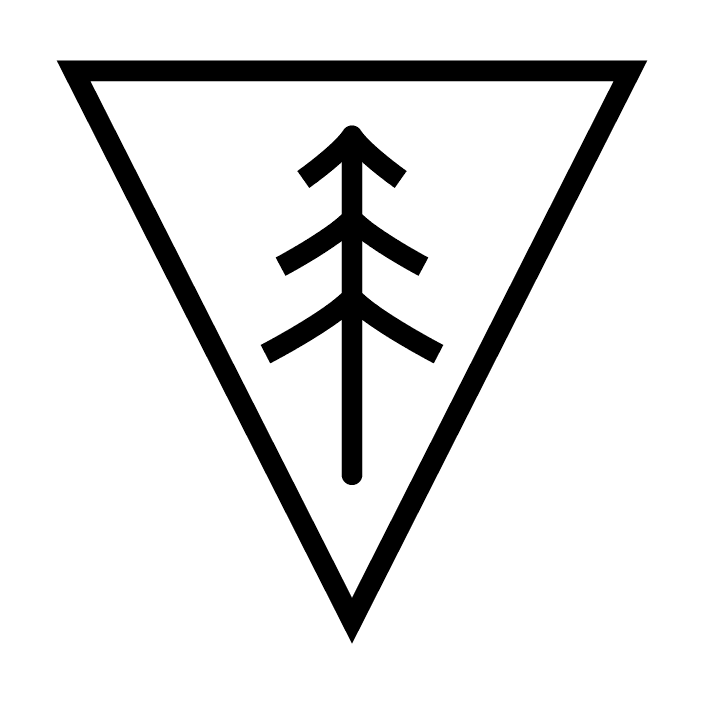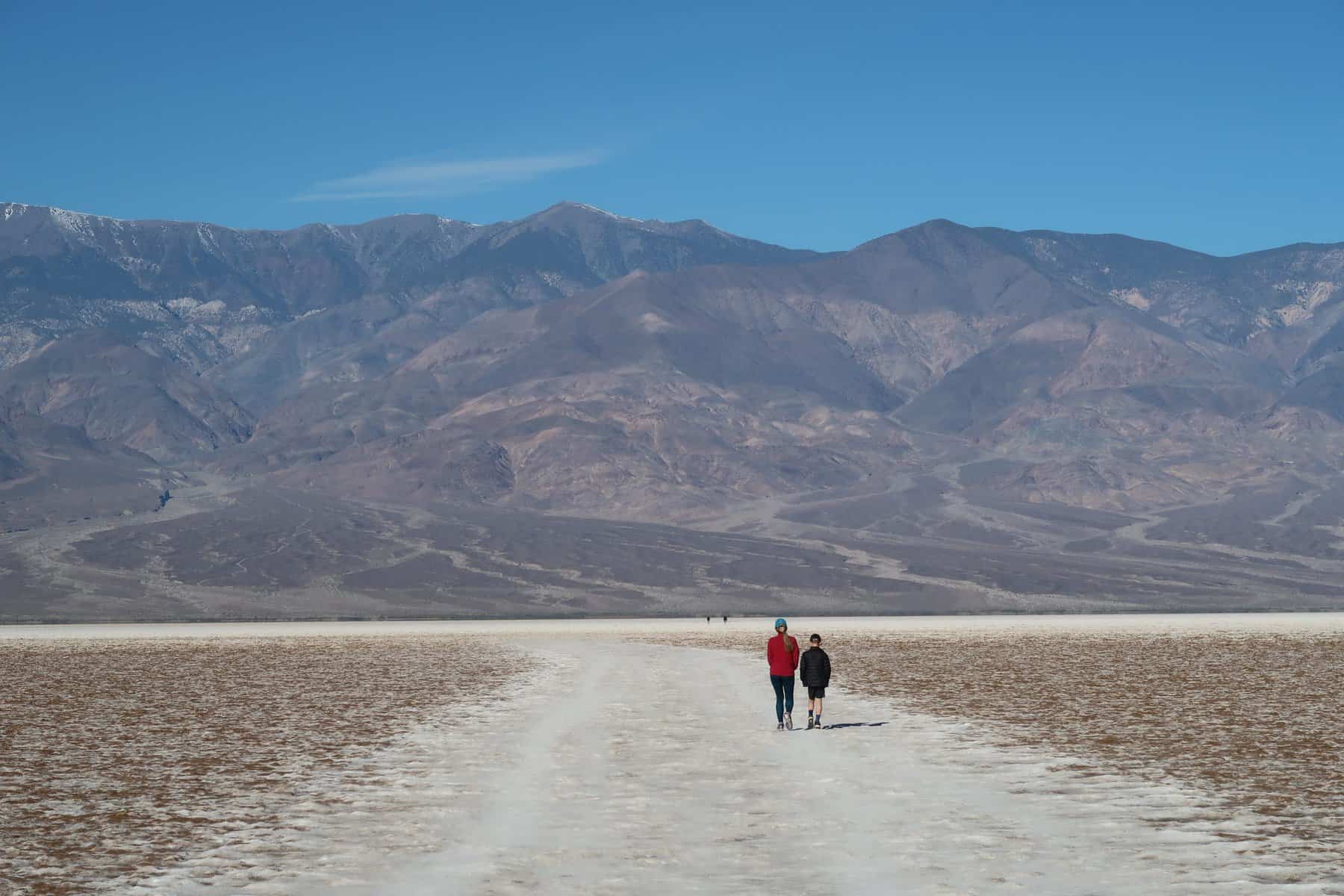The truth is, Death Valley National park was an afterthought for our family. The name, “Death Valley,” was not a great branding choice!
The idea of being in one of the hottest places on Earth is also not very appealing to this family of Texans. However, a few years ago, on our way home from Joshua Tree, we realized how close Death Valley was, and we made what we thought to be a quick detour.
There was something about our hike onto Badwater Basin that changed me. It bonded me to the very place I thought I would be least likely to enjoy.
And this, my friends, is the magic of our national parks: they make us fall in love, feel, long for snippets of nature that we never would have known had we not committed to the journey of knowing them.
And so the love that began at Badwater Basin has spread to other Death Valley adventures. And they just keep drawing me back.
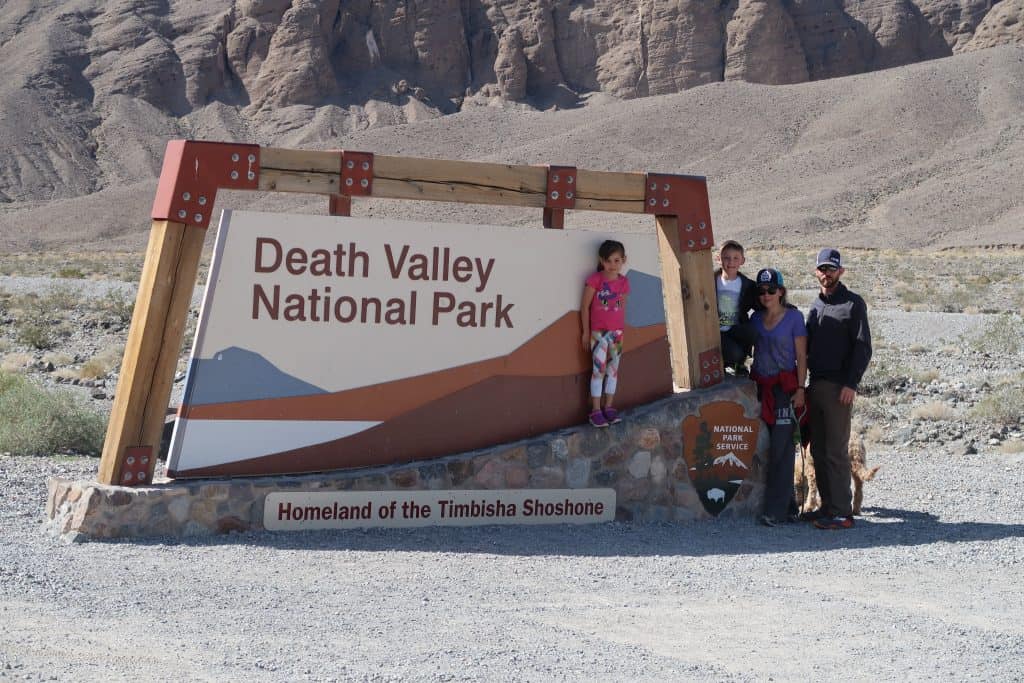
Death Valley National Park is a must-visit destination. It lies in the south-eastern edge of California and spreads through the northern Mojave Desert.
This vast park covers over 3 million acres of diverse landscapes including salt flats, sand dunes, canyons, and mountains. With its extreme temperatures and unique geological features, Death Valley can offer visitors a once-in-a-lifetime experience.
Or, if you’re lucky, it offers you a place to return over and over again.
The Furnace Creek Visitor Center
Start your adventure at the Furnace Creek Visitor Center. You can pick up Junior Ranger books, grab a copy of the park newspaper, and find updates about conditions and events.
Then, hook a right, and head into the museum. It is somewhat hidden, and I think our family missed it the first time we went to Death Valley. It is a well curated space with fun, interactive exhibits.
Children and adults alike will enjoy wandering through this section of the visitor center. Once you have enjoyed that initial introduction to the park and you have a list of ranger programs and highlights, you are ready to head outside!
Hiking
Death Valley National Park offers a variety of hiking trails, ranging from easy walks to strenuous hikes. Some of the most popular hiking trails include the Golden Canyon Trail, the Mesquite Flat Sand Dunes, and the Telescope Peak Trail.
Hiking in Death Valley can be challenging due to the extreme heat, so it’s important to bring plenty of water, wear sunscreen and protective clothing, and hike during cooler parts of the day.
We have two top picks, can’t miss, trails for families. First, Badwater Basin. The walk out onto the salt flats in the center of seemingly-black mountains is magical.
Kids and adults alike are mezmerized by the salt flats. The sparkle, the crunch, the patterns. It is level, and you can go as far as you would like.
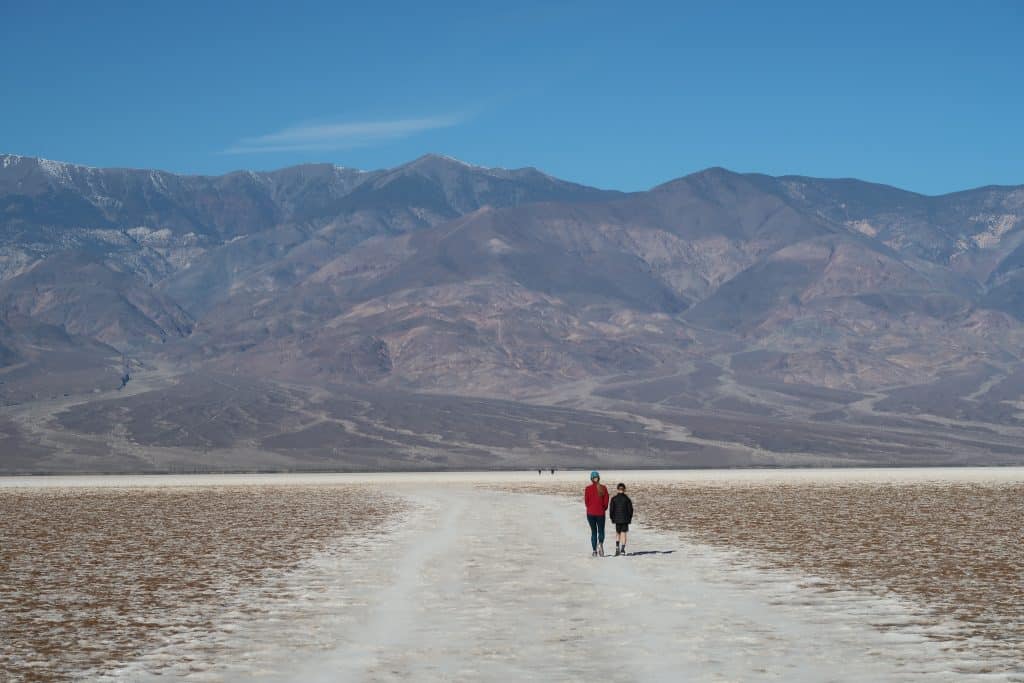
The second hike that is perfect for families is the Golden Canyon Trail, but the objective is to include the hike up to Red Cathedral. This entire route ends up being about three miles.
It is relatively easy; however, there are some obstacles on the portion up to Red Cathedral. This segment reminded me of Fiery Furnace in Arches National Park – the hike I classified as the best hike in that park. Kids will delight in the adventure of this hike!
Sled The Dunes
The Mesquite Falt Sand Dunes offer both hiking and sledding opportunities in the park. Make sure you have the proper type of sandboard, and spend a few hours with the kids enjoying the thrills.
When everyone is tired and sandy, you can drive two miles down the road to Stovepipe Wells and enjoy an Old West meal at the Toll Road Restaurant.
Note: there is NO sandboard rental in the park. You will need to bring your own.
Wildlife Watching
Despite its harsh conditions, Death Valley National Park is home to a surprising amount of wildlife. Visitors may encounter animals such as bighorn sheep, coyotes, desert tortoises, and various species of birds.
The park also has several designated birding areas including the Salt Creek Interpretive Trail and the Mesquite Springs Campground.
If you are lucky enough to be visiting in the spring, you may be able to catch site of the endangered pup fish. This treat is on my own bucket list; however, after several visits to Death Valley, the only wildlife I have seen thus far were a rogue, fearless coyote and a few birds!
Cultural and Historical Sites
In addition to its natural wonders, Death Valley National Park also has a rich cultural and historical heritage. The park contains several sites that offer insight into the region’s history including the Harmony Borax Works, the Scotty’s Castle Visitor Center, the Wildrose Charcoal Kilns, and the Ubehebe Crater.
Visitors can also explore the park’s Native American cultural sites, including the Furnace Creek Museum and the Manzanar National Historic Site.
The park hosts frequent flintknapping demonstrations at the Borax Museum. This is a fun opportunity for kids to learn how to create tools from stone!
If your family is at Death Valley between January and March and you are interested in paleontology, the park hosts ticketed, guided hikes to explore special sites in a remote area of the park. The seven mile tour is moderately strenuous and requires that child-participants be at least 10-years-old.
These sites are absolute must-sees if you’re looking for the complete Death Valley experience. My teacher heart is a little bit obsessed with the borax history of the park and how well that relates to kids’ study of metals and nonmetals. (Boron is a metalloid with properties of both!)
Swimming
If you are staying in Furnace Creek, whether in the Xanterra-run campground, The Ranch, or The Inn, you will have access to a swimming pool. Since swimming is on our daughter’s list of “musts” on vacation, I thought I would point this out as an unusual but exciting feature of these national park accommodations.
The pools in this area of the park are spring-fed and maintain a comfortable temperature year-round!
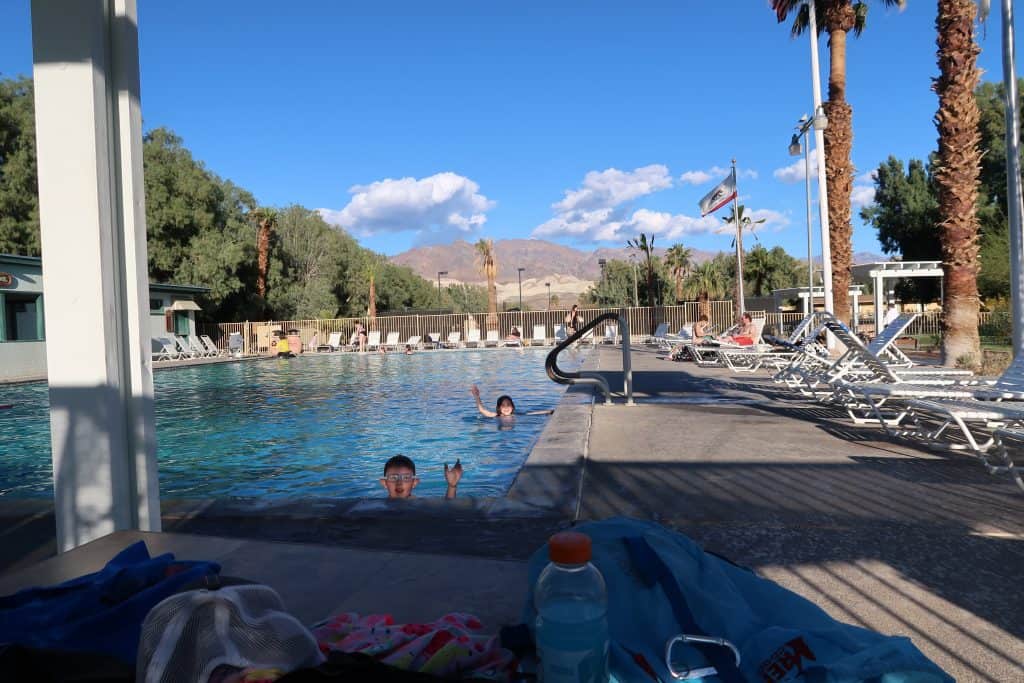
Stargazing
Death Valley National Park is known for its incredible stargazing opportunities. The park has some of the darkest skies in the country, making it the perfect place to observe the stars. The park also hosts ranger-led stargazing programs throughout the year providing visitors with an opportunity to learn about the stars and constellations.
If you’re lucky enough to be at Death Valley during the spring, you may just have the opportunity to enjoy the Death Valley Dark Sky Festival. This event hosts talks, tours, and activities for the entire family!
Death Valley National Park is a unique and diverse destination that offers something for everyone. Whether you enjoy hiking, stargazing, photography, wildlife watching, or exploring cultural and historical sites, this park has it all. Read our Complete Guide to Death Valley for more details on how to get there and where to stay.
So, pack your bags and get ready to experience the best of Death Valley National Park. With its stunning landscapes, rich history, and endless opportunities for adventure, it’s a destination you won’t want to miss!
